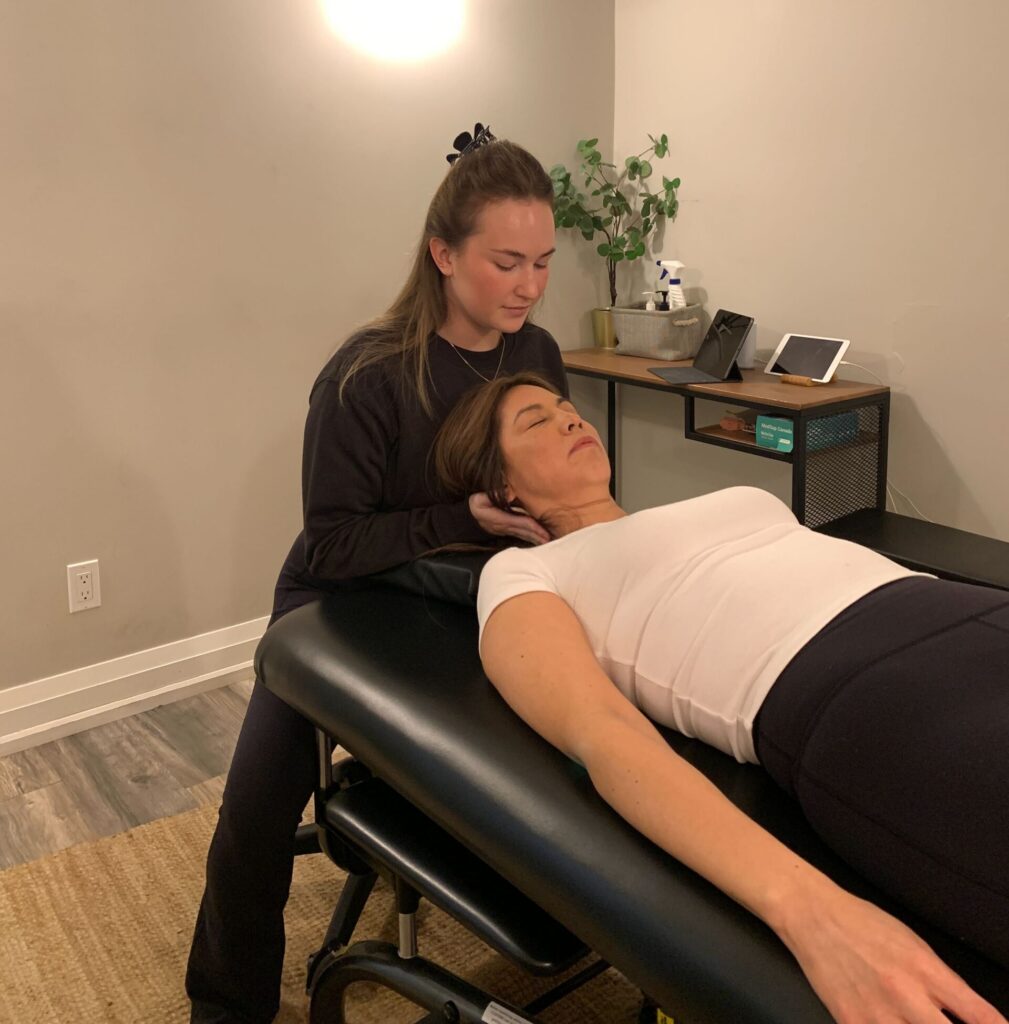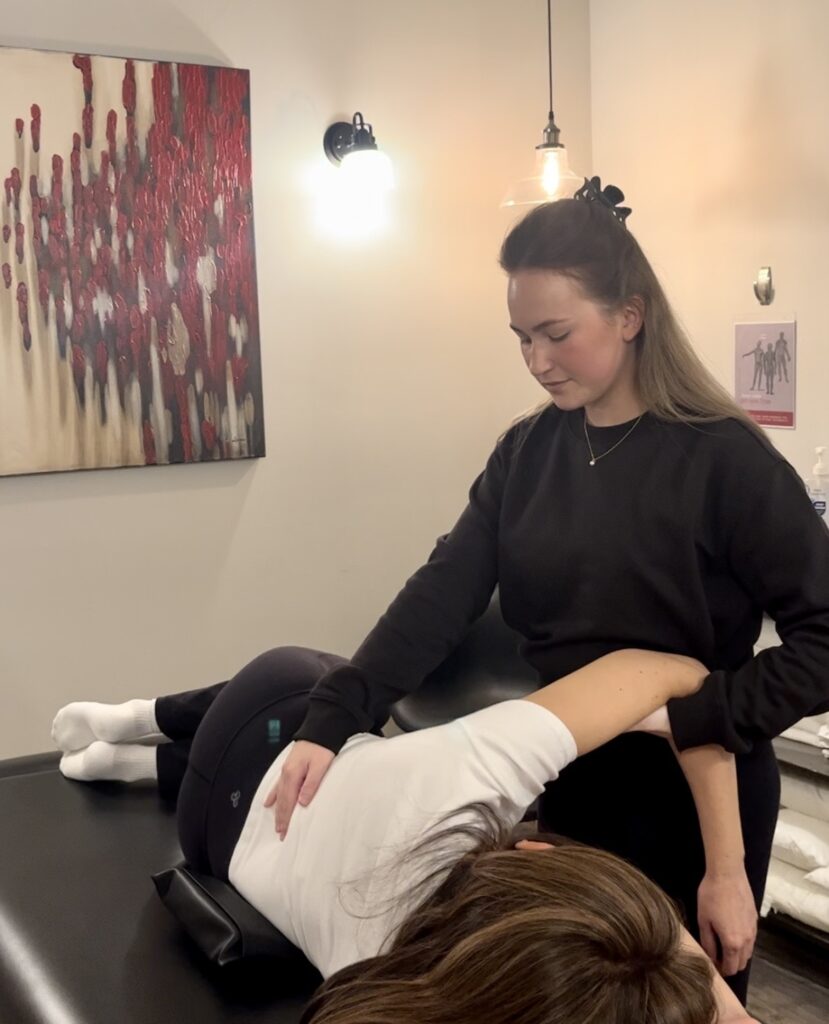From Back Pain to Digestive Issues: Discovering the Versatility of Osteopathic Treatment
From relieving back pain to addressing digestive issues, osteopathic treatment has proven to be a versatile and effective solution for a wide range of health concerns. With a holistic approach that focuses on the body’s ability to heal itself, osteopathy offers a non-invasive and drug-free alternative to traditional medical treatments.
Whether you are suffering from chronic back pain, digestive issues, or other musculoskeletal disorders, osteopathic treatment may offer a holistic and effective solution. Consult with a qualified osteopath to explore the potential benefits of this versatile form of therapy.
Osteopathic Manual Practice
An osteopath is taught that Nature should be trusted to the end.
Andrew Taylor Still, Founder of Osteopathy
In Canada, the term Osteopath is generally used to refer to Osteopathic Manual Practitioners. In some other countries, Osteopathy encompasses a larger scope of practice and providers are referred to as Doctors of Osteopathy.
Osteopathic practitioners use a variety of manual techniques to assess and treat their patients. They are trained to assess and manipulate the musculoskeletal system, visceral organs, lymphatic and nervous systems to promote overall health and well-being.
One of the key principles of osteopathy is the understanding that the body functions as a whole. By addressing the root cause of the problem, rather than just the symptoms, osteopathic treatment aims to restore balance and harmony within the body. This can not only provide relief from pain and discomfort but also support the body’s natural ability to heal itself.
Osteopaths use a combination of techniques, including soft tissue manipulation, stretching, joint mobilization, and gentle manipulation of the spine and other areas of the body. These techniques help to improve circulation, decrease tension in the muscles, promote proper alignment, and enhance the body’s natural healing processes.

Understanding osteopathic treatment
Osteopathic treatment is a form of manual therapy that aims to restore balance and harmony within the body. Unlike some other forms of treatment that simply focus on alleviating symptoms, osteopathy takes a whole-body approach. Osteopaths believe that the body functions as a unit, and any imbalance or dysfunction in one area can affect the entire body. By addressing the root cause of the problem, osteopathic treatment aims to stimulate the body’s self-healing mechanisms, promoting long-term relief and overall wellness.
Osteopaths are highly-trained functional anatomists who use a variety of techniques to assess and manipulate the musculoskeletal system to modify it’s impact on the internal organs, vessels, and nerves that are interconnected with it. This interconnectedness plays a crucial role in the overall health and well-being of an individual, as dysfunction in one area will impact several others.
How osteopathic treatment works
Osteopathic treatment works by restoring balance and harmony within the body. When there is an imbalance or dysfunction in the musculoskeletal system, it can lead to a variety of health issues, including pain, restricted movement, and compromised organ function.
During an osteopathic session, the practitioner will conduct a thorough assessment of the patient’s medical history, lifestyle, and specific condition. This allows them to develop a tailored treatment plan that addresses the individual’s unique needs.
Osteopathic treatment involves gentle manipulation and mobilization of the affected areas. The aim is to relieve tension, improve joint mobility, and enhance the body’s ability to heal itself. Osteopaths also provide advice on lifestyle modifications, exercises, and stretches that can support the healing process and prevent future issues.
What does an Osteopath treat?
Osteopathic treatment offers a versatile and effective solution for a wide range of health concerns, from back pain to digestive issues and beyond. By taking a holistic approach that focuses on the body’s natural ability to heal itself, osteopathy provides a non-invasive and drug-free alternative to traditional medical treatments.
Whether you are suffering from chronic pain or seeking treatment for a specific condition, consulting with a qualified osteopath can help you explore the potential benefits of this versatile form of therapy. With their expertise and personalized treatment plans, osteopaths can support your journey towards improved health and well-being.
Osteopathic treatment has been found to be effective for a wide range of conditions and ailments. Some of the most common issues treated by osteopaths include: chronic pain, mobility concerns, and functional imbalances. Treatment with an osteopathic practitioner can help improve biomechanics and recover from injuries, adapt to changes in physical demands in different life stages, and support the body’s ability to repair and heal at all ages.
Osteopathy can also offer relief for a wide range of chronic health conditions through it’s impact on the muskuloskeletal and connective tissues, internal organs, lymphatic system, and nervous system:
- Muscle and joint injuries
- Back pain and sciatica
- Frozen shoulder
- Carpal tunnel syndrome
- TMJ dysfunction
- Hip Impingement
- Swelling or inflammation
- Migraine and headaches
- Anxiety and burnout
- Irritable Bowel Syndrome (IBS)
- Acid reflux
- Constipation
- Pelvic and SI joint pain
Finding the best Osteopath for your needs
When seeking osteopathic treatment, it is essential to find a qualified and experienced osteopath. Look for professionals who are registered with recognized osteopathic associations and have a solid track record of successfully treating patients (like our team of Osteopaths at Anatomica!)
You can ask for recommendations from your primary healthcare provider, friends, or family members who have undergone osteopathic treatment. Additionally, online reviews can provide valuable insights into the reputation and expertise of different osteopaths.
During your initial consultation, make sure to ask questions about the osteopath’s qualifications, treatment approach, and expected outcomes. A good osteopath will take the time to listen to your concerns, conduct a thorough assessment, and develop a personalized treatment plan tailored to your needs.

Osteopathic treatment works by restoring balance and harmony within the body. When there is an imbalance or dysfunction in the musculoskeletal system, it can lead to a variety of health issues, including pain, restricted movement, and compromised organ function.
Osteopathy for Back Pain and Sciatica
Back pain is a prevalent issue that affects millions of people worldwide. Whether it is caused by repetitive posture, muscle strain, or a more serious injury to the spine, osteopathic treatment can provide significant relief.
Osteopaths use a combination of techniques to address back pain, including spinal manipulation, soft tissue massage, and stretching exercises. Breathing exercises, indirect and reflexive techniques can be used to help reduce painful spasms. These techniques help to realign the spine, relieve muscle tension, improve circulation, and promote healing.
Osteopathy for Digestive issues
Digestive issues such as irritable bowel syndrome (IBS), acid reflux, and constipation can be debilitating and impact one’s quality of life. Osteopathic treatment can help address these issues by improving the function of the digestive system.
Osteopaths focus on releasing tension and improving blood flow to the organs involved in digestion. By gently manipulating the abdomen and surrounding muscles, they can alleviate discomfort, promote proper digestion, and support overall gastrointestinal health.
Digestive issues can be both uncomfortable and disruptive to daily life. Conditions such as irritable bowel syndrome (IBS), acid reflux, and constipation can cause pain, bloating, and bowel irregularities. While there are various treatments available for these conditions, osteopathic treatment offers a unique approach.
Osteopaths view the digestive system as an integral part of the body’s overall health, and they work to identify any underlying musculoskeletal imbalances that may be contributing to digestive issues. By using gentle manipulation techniques, osteopaths can help improve the function of the digestive organs, relieve tension in the surrounding muscles, and promote better digestion.
In addition to hands-on techniques, osteopaths may also provide dietary and lifestyle recommendations to support digestive health. They may suggest changes in eating habits, stress management techniques, and exercises that can help strengthen the abdominal muscles. By addressing the root cause of the digestive issues, osteopathic treatment aims to provide long-term relief and improve overall well-being.
Sports injuries and Osteopathic treatment
Sports injuries are common and can range from minor sprains and strains to more severe conditions such as fractures and ligament tears. Osteopathic treatment can play a vital role in the recovery and rehabilitation process.
Osteopaths work closely with athletes to identify the root cause of the injury and develop a personalized treatment plan. This may include manual therapy techniques, exercises to strengthen and stabilize the affected area, and advice on injury prevention strategies.
Osteopaths have a deep understanding of the musculoskeletal system and how it functions during physical activity. They can assess and treat the specific areas of the body affected by sports injuries, helping to reduce pain, inflammation, and promote healing.
Through a combination of manual techniques, such as soft tissue manipulation, joint mobilization, and stretching exercises, osteopaths can help athletes regain strength, flexibility, and range of motion. They may also provide guidance on injury prevention strategies and recommend exercises to improve overall performance.
Osteopathic treatment for sports injuries focuses not only on the injured area but also on the surrounding structures and the body as a whole. By addressing imbalances and dysfunctions in other parts of the body, osteopaths can help athletes recover faster and return to their sport with reduced risk of further injury.
Prenatal Osteopathic treatment
Pregnancy can put a significant strain on the body, leading to discomfort and musculoskeletal issues. Osteopathic treatment can provide relief for pregnant people by addressing these concerns and helping the body adapt to the changes and demands of pregnancy. Prenatal osteopathy is safe and gentle, and adaptable to each person’s unique needs.
Osteopaths use gentle techniques to alleviate pain and discomfort associated with pregnancy. They may also provide advice on posture, exercises, and stretches that can help support the body throughout the different stages of pregnancy. Prenatal osteopathy can help the pregnant client prepare for labour and delivery, and help with recovery after birth.
As the body adapts to accommodate a growing baby, the musculoskeletal system undergoes significant changes. Hormonal shifts, weight gain, and postural adjustments can result in back pain, pelvic pain, and other musculoskeletal issues. Osteopathy treatment can provide relief and support throughout the various stages of pregnancy.
Osteopaths trained in prenatal care can help alleviate these discomforts by addressing the underlying musculoskeletal imbalances. Through gentle techniques, they can relieve tension in the back, pelvis, and other areas, improving overall comfort and mobility.
Osteopathic treatment for pregnant people is safe and non-invasive, focusing on the unique needs and challenges of pregnancy. It can provide relief from common pregnancy-related issues, support optimal fetal positioning, and prepare the body for labor and delivery.

Osteopaths have a deep understanding of the musculoskeletal system and how it functions during physical activity. They can assess and treat the specific and connected areas of the body affected by injuries, helping to reduce pain, inflammation, and promote healing.
Finding a qualified osteopath
When seeking osteopathic treatment, it is important to find a qualified and experienced osteopath who meets your specific needs. Here are some tips to help you find the right practitioner:
1. Research: Start by researching reputable osteopathic clinics or practitioners in your area. Look for practitioners who hold Master’s level degrees in Osteopathic science, who will have the education and experience needed for effective Osteopathic treatment.
2. Credentials: Verify that the osteopath is properly licensed and registered with an appropriate regulatory body like OSTCAN or the Ontario Association of Osteopathic Manual Practitioners. This ensures that they have met the professional requirements so that your Osteopathy treatments are eligible to claim to any insurance or extended healthcare benefits plans with coverage for Osteopathy.
3. Experience: Inquire about the osteopath’s experience and expertise in treating the specific condition or age group you require. Ask about their success rates and any additional certifications or training they have undergone. Read their online bio or ask the clinic to help match you with the best fit.
4. Referrals: Seek recommendations from trusted sources, such as friends, family, or healthcare professionals. Personal referrals can provide valuable insights into the quality of care provided by a particular osteopath. Online reviews can be helpful to find a reputable Osteopathy clinic.
5. Initial consultation: Schedule an initial consultation with the osteopath to discuss your concerns and treatment goals. This will allow you to assess their communication style, bedside manner, and whether you feel comfortable working with them.
Remember, finding the right osteopath is essential for achieving optimal results and ensuring a positive treatment experience! Feel free to contact us for more information and help choosing the best Osteopath at Anatomica for your unique needs and goals.

